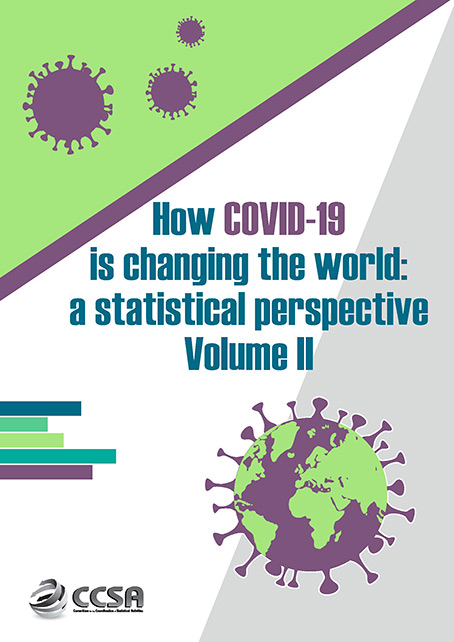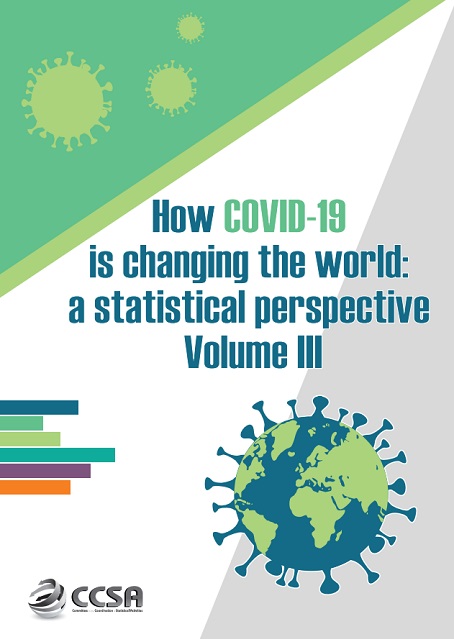COVID-19 et statistiques du travail
Table des matières
Pages connexes
Voir aussi
La pandémie de coronavirus a eu un impact important sur nos vies et nos sociétés - mais quel est l'impact et les conséquences pour les marchés du travail et la collecte des statistiques du travail ?
Derniers messages
Orientations pour la collecte des données
La pandémie de COVID-19 a créé de nombreux défis pratiques et conceptuels, ainsi qu'une demande importante de données améliorées pour décrire l'impact sur les marchés du travail et le monde du travail. L'OIT a produit une série d'informations et de guides pour décrire les impacts de COVID-19 sur la collecte de données, et aider les pays à continuer à produire des données pertinentes.
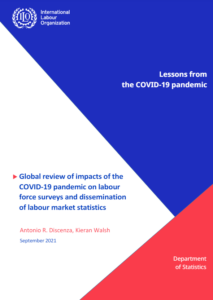
Examen global de l'impact de la pandémie de COVID-19 sur les enquêtes la main-d’œuvre et la diffusion des statistiques du marché du travail
En mars 2021, l'OIT a entrepris une enquête mondiale auprès des producteurs nationaux de données afin de comprendre les impacts de la pandémie sur leurs opérations statistiques, en particulier dans le domaine des statistiques du travail.

Renforcer les mesures et les données sur le genre à l'ère du COVID-19 : Un besoin urgent de changement
Cette note met en évidence cinq domaines clés dans lesquels une action forte et décisive est nécessaire pour améliorer durablement la disponibilité des données clés sur le genre, y compris dans le monde du travail.

Définir et mesurer le travail à distance, le télétravail, le travail à domicile et le travail à domicile
Le travail à distance et le travail à domicile ne sont pas des phénomènes nouveaux, mais la pertinence de leur mesure a augmenté, notamment en raison de la pandémie de Covid-19. Ces notes fournissent des conseils aux producteurs de données sur la manière dont les quatre concepts différents de travail à distance, télétravail, travail à domicile et travail à domicile doivent être compris statistiquement, comment ils sont liés les uns aux autres et comment ils peuvent être mesurés par le biais d'une enquête sur les ménages.

Saisir l'impact sur l'emploi et le travail non rémunéré à l'aide d'enquêtes rapides
Le manque de données sur l'impact de la pandémie sur les ménages et les travailleurs peut sérieusement affecter la formulation de programmes et de politiques visant à aider ceux qui en ont le plus besoin. En temps de crise, les enquêtes rapides peuvent constituer une source d'information alternative lorsque les enquêtes officielles sur les ménages, telles que les EFT, ont été interrompues ou reportées. Cette note fournit des modules pour les enquêtes rapides afin de mettre en lumière les impacts du COVID-19 sur le travail rémunéré et non rémunéré.
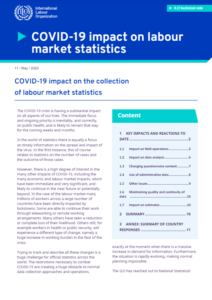
COVID-19 impact sur les statistiques du marché du travail
Les restrictions nécessaires pour lutter contre la COVID-19 constituent un énorme obstacle aux opérations de collecte de données, précisément lorsque la demande d'informations augmente massivement. Le BIT a contacté les producteurs de données nationaux pour comprendre les impacts de la pandémie sur leurs opérations statistiques, notamment dans le domaine des statistiques du travail. Dernière mise à jour : mai 2020
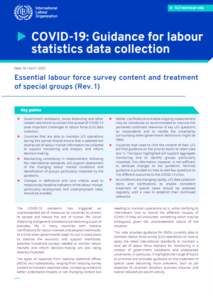
Conseils aux producteurs de données pour maintenir la collecte des données de l'enquête la main-d’œuvre
L'impact le plus immédiat de la pandémie sur la collecte des données de l'EFT pour la plupart des pays est la suspension des entretiens en face à face. Cette note fournit des conseils aux pays sur l'éventail des options disponibles et les défis à relever pour modifier leur approche de la collecte des données et maintenir la continuité de la disponibilité des données.

COVID-19 Guide pour la collecte de données sur les statistiques du travail : Indices des prix à la consommation
La crise du COVID-19 affecte les activités de collecte de données des offices nationaux de statistique (ONS) du monde entier, y compris pour les indices des prix à la consommation (IPC).
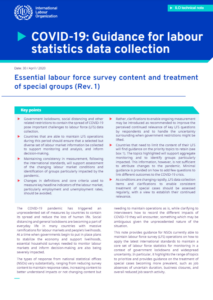
Essentiel la main-d’œuvre Contenu de l'enquête et traitement des groupes spéciaux
Les normes internationales restent une référence solide, mais en raison de cette pandémie sans précédent, cette note fournit des conseils aux producteurs de données pour maintenir les opérations de l'enquête la main-d’œuvre (LFS). Elle met en évidence l'éventail des sujets à traiter en priorité dans les EFT nationales et propose des clarifications pour soutenir le traitement cohérent de cas particuliers de plus en plus fréquents, tels que les absences d'emploi de durée incertaine, les fermetures d'entreprises et la réduction générale de l'activité de recherche d'emploi.
Ressources
Pour les producteurs de données
- COVID-19 : Directives pour la collecte de données sur les statistiques du travail (OIT)
- Utilisation des sources de données administratives dans le cadre de COVID-19 (UNDESA)
- Pays avec un recensement en 2020 et l'impact de COVID-19 (UNSD)
- COVID-19 : Soutien aux statisticiens (EUROSTAT)
- Plate-forme de la CEE-ONU sur la COVID-19 et les statistiques officielles
Plus de ressources
- Portail thématique de l'OIT sur la COVID-19 et le monde du travail
- COVID-19 Site web de la réponse des Nations Unies en matière de statistiques (UNDESA)
- Portail thématique de l'OCDE sur le COVID-19
- Portail de l'OCDE pour les statistiques officielles et COVID-19 (inscription requise)
- COVID-19 : Des statistiques au service de l'Europe (EUROSTAT)





